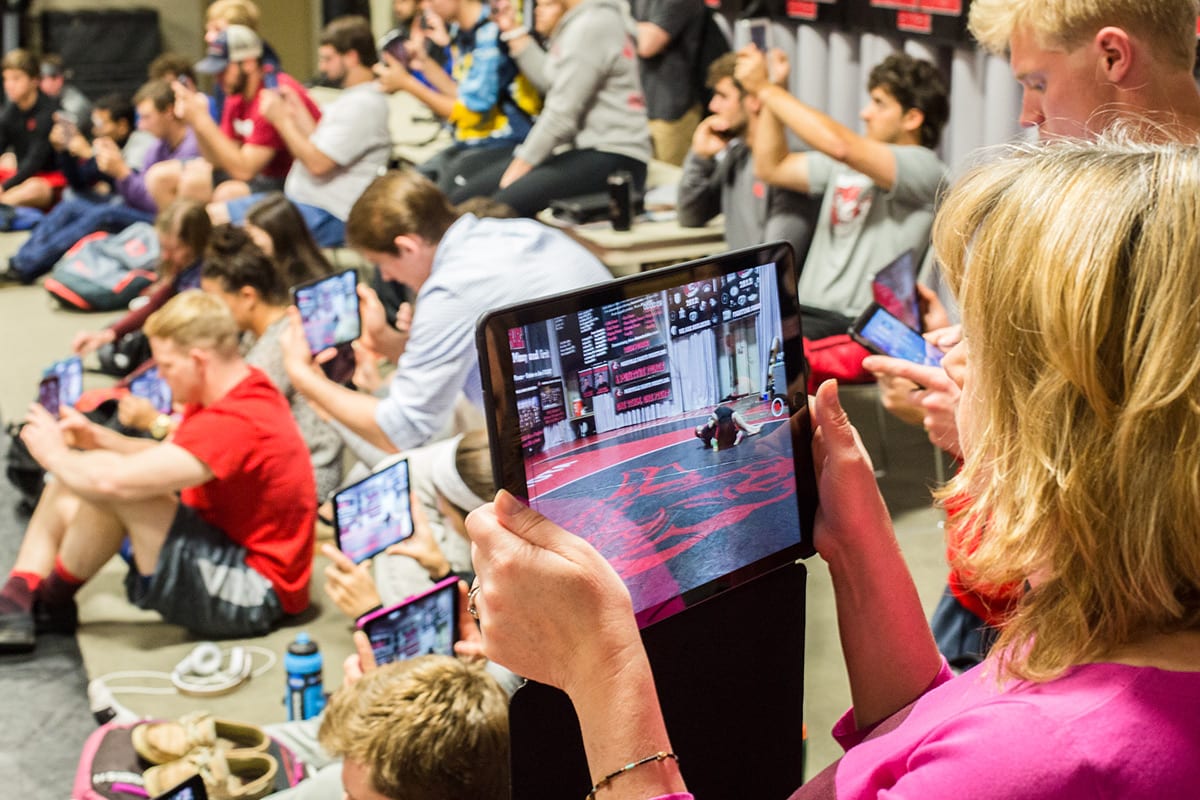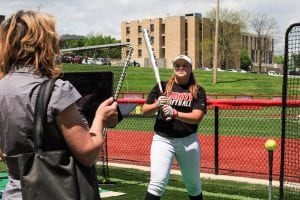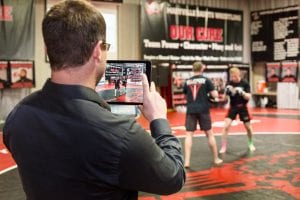Learning about science at Maryville University has moved from just a lab to include other environments including a softball field and a wrestling dojo.
To entice non-science majors to become more interested in science courses, professors came up with a new concept to combine the subjects of science and sport through experiential learning experiences outside the classroom. Thus, the development of Maryville’s Science of Sports class.
“Students in Science of Sports always tell us that the ‘field trip’ where we learn the science literally on the field or in the dojo is the best part of the class,” says Candace Chambers, professor of chemistry. “Rather than taking a traditional class like Introduction to Biology or Introduction to Physics as a general education science course to fulfill core university requirements, in this class, students learn a wide variety of disciplines of science as they apply to a topic (sports) that many of us enjoy.”
And, it’s been a hit with students. According to a survey Chambers hands out at the end of the year, a vast majority of students mention the class was interesting and informative.
One student writes: “It is very interesting and it is not difficult to follow along. I think anyone would enjoy taking this class.”
Another student writes: “This is a beneficial class for people in my major, Sport Business Management, to take because the course takes the interesting scientific aspects of sports and explains them thoroughly.”
The experiential learning aspect is what drew Hope Miller, who is majoring in English and Secondary Education, to the class.
“Instead of just seeing it on a PowerPoint or reading an article about it, we got to understand how it works through our own action or watching another person do the action up close,” says Miller, an outfielder on Maryville’s softball team. “For me, it makes me look deeper into some sports than before and the difficulty level. The way I analyze my swing and how I throw the ball has a lot to do with physics, and I never noticed I was doing it until now.”
Ethan Sherertz also appreciates the class because of the interactive projects students work on during the semester.
“This class differs from other science classes because it is much, much more interactive,” says Sherertz. “Also, the topic matter directly pertains to the interests of the students in the class. As opposed to feeling like the class was an obligation, I felt like the class was exceptionally enjoyable.”
Chambers says the concept of the class originated in 2010 when she joined Maryville and the faculty began a process of creating a suite of experiential learning classes in the field of science.
Before long these classes became more common and Science in Sports became the third in the series. Nutrition and Energy and Our World are similar, interdisciplinary science courses, according to Chambers.
“Someday, I’d love to develop a food- or beverage-based class, like Coffee or Ice Cream,” says Chambers. “There are actually textbooks available to learn science through these topics. However, it’s the experiential learning piece of all of these courses that is a big part of what makes them so awesome.”
As of now, projects the students work on in class change each semester depending on interests with some projects being repeated.
“All of the students select a course project and work, in groups, and with their faculty mentor to conduct the study during the semester,” says Chambers. “We don’t know what next year’s projects will be until we meet the students.”
Projects for the class have included: Psychology of Color in Sports, Are Receiver Gloves Helpful, Does Protein Powder Affect Performance and/or Recovery Time, Does Rotation of Fastball Affect Velocity and the Relationship Between Diet and Rate of Weight Loss for Wrestlers.


